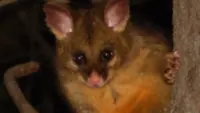Researcher Jon Aars is concerned about the effect of forever chemicals on polar bears. — dpa/Norwegian Polar Institute/Magnus Andersen
“Humanity is on thin ice – and this ice is melting fast,” said UN Secretary General Antonio Guterres recently of global warming.
If climate change is bad for people, it is even worse for polar bears, forced to head to cooler regions and eat different kinds of foods.
Already a subscriber? Log in
Save 30% OFF The Star Digital Access
Cancel anytime. Ad-free. Unlimited access with perks.





